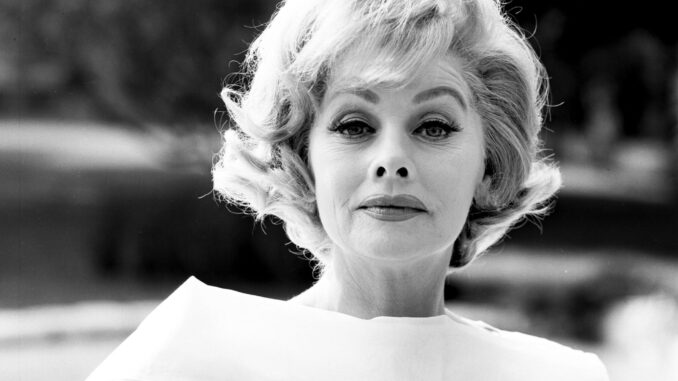
Before she died in 1989, Jamestown, N.Y., officials approached Lucille Ball with the idea for a museum. But she told them: “Don’t just celebrate me — don’t just put my stuff in glass cases,” said Journey Gunderson, executive director of The National Comedy Center, “make my hometown a destination for the celebration of all comedy and its artists.”
So that’s what they did.
There’s certainly a lot that celebrates Lucy in Jamestown: In addition to the National Comedy Center,there’s the Lucille Ball Desi Arnaz Museum that displays costumes, memorabilia and replicas of the original I Love Lucy set and Ricky Ricardo’s Tropicana club.
Visitors can take a “Lucytown” bus tour to see the homes where she was born and raised, her gravesite, and one of the buildings where she performed as a teen.
But Jamestown does far more than celebrate just Lucy. The National Comedy Center, a few blocks away from the Lucy and Desi museum, showcases everything from black-and-white cinema slapstick to the bluest standup comedy. There are dozens of interactive exhibits, like a stand-up lounge where visitors can get on stage, take the mic and see what it’s like to try to make an audience laugh.
During the annual festival, which takes place around Ball’s August birthday, you can see a number of attendees dressed in her trademark polka dot dress.
This year’s headliners were Nate Bargatze, who’s been called “The nicest guy in stand-up” and Nicole Byer, the comedian/actor who’s currently hosting Netflix’s reality baking show Nailed It! The festival also brought in a number of rising stars who performed standup at the Tropicana.
Jamie Bogert came to the festival from Philadelphia with her mother. She said all of the different activities showed them how Ball helped “pave the way in so many ways for comedy.”
“I think having the Lucy museum part of Jamestown and then having this new comedy center is just such a perfect combination,” said Bogert. “We were saying, it was so great to see comedians last night and like, maybe it’s their start and they’re trying to get their name out or whatever else.”
An interactive exhibit at the National Comedy Center invites visitors to select from a shelf full of objects — a frying pan, a banana, a rubber chicken. When you place the object on the table and it triggers a video that shows different comedy bits that have incorporated that prop across time and genre.
An interactive exhibit at the National Comedy Center invites visitors to select from a shelf full of objects — a frying pan, a banana, an anvil, a rubber chicken. When you place the object on the table and it triggers a video that shows all of the different comedy bits that have incorporated that prop across time and genre.
Lena McBean/National Comedy Center
Even when the festival is not in town, the center is more than a collection of artifacts. The tour begins with visitors creating their personal comedy profiles by selecting their favorite comedians, TV shows and movies. Once created, your wristband allows you to tailor some of the exhibits to your personal preferences.
There are interactive exhibits, like comedy karaoke, and a green screen where you can try to perform the iconic chocolate candy conveyor belt scene from I Love Lucy or Abbott and Costello’s famous “Who’s on First” bit.
Extensive exhibits are dedicated to comedy idols like Johnny Carson, Carl Reiner and George Carlin.
Byer said she’d heard about the museum, but “didn’t realize the depth of it.”
One of her favorite comedians is Rodney Dangerfield, known for starring in Back to School and Caddyshack and for his “I don’t get no respect” standup routine.
Byer loved seeing the duffle bag that he took from gig to gig, his handwritten jokes and his trademark suit and red tie.
“I didn’t know he was so trim,” she laughed.
It’s fitting that Dangerfield joked about getting no respect, because comedians often don’t, said the National Comedy Center’s Gunderson. Too many people don’t understand that comedy is its own art form.
That’s why one of the goals of the museum is to show visitors “the intensity and the rigor of the process,” Gunderson said. Something Lucille Ball knew well.
